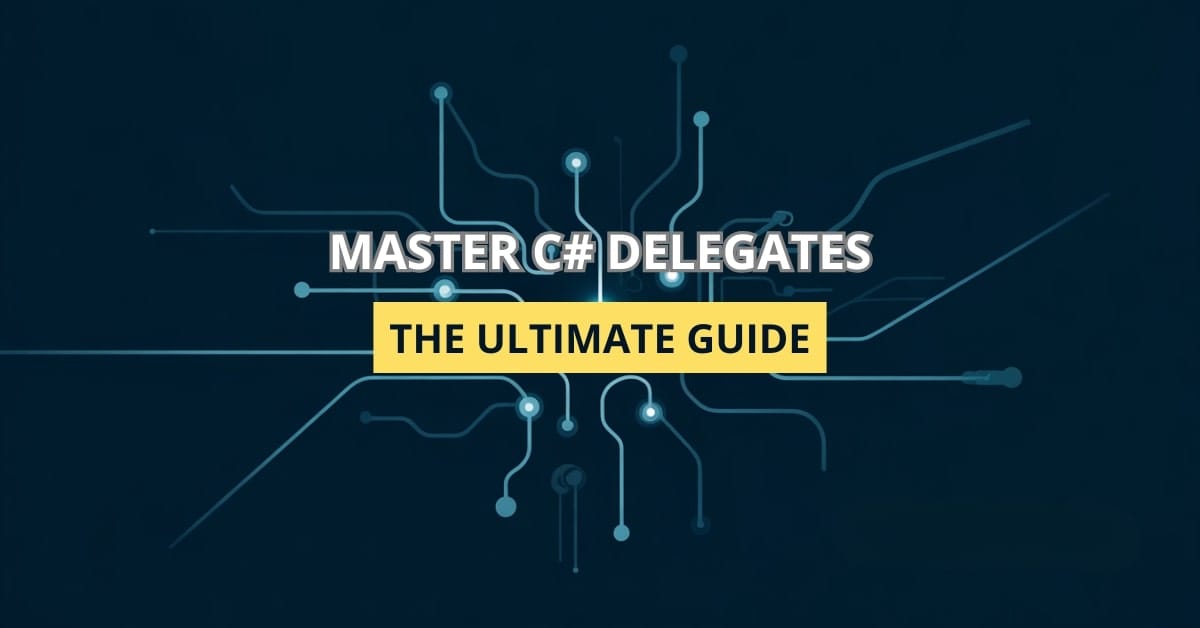Have you ever wondered how large applications manage their complexity so efficiently? The secret lies in Object-Oriented Programming (OOP)—a paradigm that enables developers to write reusable, modular, and scalable code. If you’ve ever struggled with code duplication, maintainability, or extensibility, mastering OOP principles in C# will change the way you develop software.
Object-Oriented Programming (OOP) is a fundamental concept in C# and plays a crucial role in structuring applications effectively. This article will take you on a deep dive into OOP principles, focusing on Inheritance, Polymorphism, Abstract Classes, Interfaces, and the sealed keyword in C#.
Inheritance: Base and Derived Classes
Base Class
A base class is a class that provides common functionality to its derived classes. It serves as a blueprint that contains common properties, methods, and behaviors.
public class Animal
{
public string Name { get; set; }
public void Eat()
{
Console.WriteLine("Eating...");
}
}Derived Class
A derived class inherits from a base class, gaining its properties and methods. It can also add new functionalities or override existing ones.
public class Dog : Animal
{
public void Bark()
{
Console.WriteLine("Barking...");
}
}Now, an instance of Dog will inherit the Name property and Eat method from Animal while also having its own Bark method.
Key Concepts
- Reusability: The derived class reuses the existing functionality of the base class.
- Extensibility: New functionalities can be added to the derived class without modifying the base class.
Why Use Inheritance?
- Reduces code duplication
- Enhances maintainability
- Supports polymorphism
Important Points about Inheritance in C#
- A class can inherit only from one base class (single inheritance).
- The
basekeyword allows access to the base class constructor and members. protectedmembers are accessible in derived classes but not outside the class hierarchy.
Polymorphism and Overriding
Polymorphism
It allows methods in derived classes to have different behaviors while sharing the same name as in the base class.
Two Types of Polymorphism in C#
- Compile-time (Method Overloading)
- Runtime (Method Overriding)
Method Overriding
Method overriding allows a derived class to modify the implementation of an inherited method using the override keyword.
public class Animal
{
public virtual void Speak()
{
Console.WriteLine("Animal makes a sound.");
}
}
public class Dog : Animal
{
public override void Speak()
{
Console.WriteLine("Dog barks.");
}
}Why is Overriding Important?
- Enables dynamic method invocation (runtime polymorphism)
- Allows creating more specialized behavior in derived classes
Additional Points
- The method in the base class must be marked as
virtual. - The overriding method in the derived class must use
override. - You can prevent overriding by marking the method
sealed.
Abstract Classes and Interfaces
Abstract Classes
An abstract class cannot be instantiated and may contain abstract methods that must be implemented in derived classes.
public abstract class Shape
{
public abstract void Draw();
}
public class Circle : Shape
{
public override void Draw()
{
Console.WriteLine("Drawing a Circle");
}
}Interfaces
An interface defines a contract that classes must implement but does not provide any implementation.
public interface IMovable
{
void Move();
}
public class Car : IMovable
{
public void Move()
{
Console.WriteLine("Car is moving");
}
}Differences & When to Use
| Feature | Abstract Class | Interface |
|---|---|---|
| Can have fields? | Yes | No |
| Can have constructors? | Yes | No |
| Supports multiple inheritance? | No | Yes |
| Contains method implementations? | Yes | No (until C# 8.0) |
When to Use:
- Use abstract classes when you need shared behavior and some implementation.
- Use interfaces when you need multiple inheritance or a contract without implementation.
The sealed Keyword
Why Use sealed?
The sealed keyword prevents a class from being inherited. It is useful for security and ensuring that no modifications occur in derived classes.
Where Can You Use sealed?
- Sealing a class:
public sealed class FinalClass
{
public void Display()
{
Console.WriteLine("This class cannot be inherited");
}
}- Sealing a method:
public class Parent
{
public virtual void Show() { }
}
public class Child : Parent
{
public sealed override void Show() { }
}Things to Remember
sealedprevents a class from being inherited.sealedmethods cannot be overridden in further derived classes.
FAQ
No, C# does not support multiple inheritance for classes. However, a class can implement multiple interfaces.
Starting from C# 8.0, interfaces can have default implementations using default interface methods.
virtual and abstract methods?1. A virtual method provides a default implementation and can be overridden.
2. An abstract method must be overridden in derived classes.
Method overriding supports runtime polymorphism, allowing derived classes to provide specific behavior, whereas method overloading resolves methods at compile time.
No, a sealed class cannot be inherited.
Conclusion: Mastering OOP in C#
Understanding inheritance, polymorphism, abstract classes, interfaces, and the sealed keyword is essential for writing maintainable, scalable, and reusable C# applications. These principles not only enhance code structure but also make debugging and extending functionality much easier.
How have you applied OOP concepts in your C# projects? Are there any challenges you’ve faced or best practices you’d like to share? Drop your thoughts in the comments below!
- Introduction to C# Development for Beginners
- .NET Dev Environment Setup Made Easy
- Master C# Object-Oriented Programming – Inheritance, Polymorphism & More
- Basic C# Syntax and Your First Program
- C# Data Types Guide 2025 – Fast, Safe, Precise




